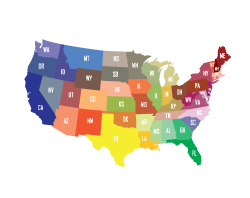DIVISION 11.5. Sentencing for Driving While Under the Influence
CHAPTER 2. Court Penalties
ARTICLE 6. Additional Court Imposed Orders and Directions
23592. (a) (1) Whenever a person is convicted of any of the following offenses committed while driving a motor vehicle of which he or she is the owner, the court, at the time sentence is imposed on the person, may order the motor vehicle impounded for a period of not more than six months for a first conviction, and not more than 12 months for a second or subsequent conviction:
(A) Driving with a suspended or revoked driver’s license.
(B) A violation of Section 2800.2 resulting in an accident or Section 2800.3, if either violation occurred within seven years of one or more separate convictions for a violation of any of the following:
(i) Section 23103, if the vehicle involved in the violation was driven at a speed of 100 or more miles per hour.
(ii) Section 23152.
(iii) Section 23153.
(iv) Subdivisions (a) and (b) of Section 191.5 of the Penal Code.
(v) Subdivision (c) of Section 192 of the Penal Code.
(vi) Subdivision (a) of Section 192.5 of the Penal Code.
(2) The cost of keeping the vehicle is a lien on the vehicle pursuant to Chapter 6.5 (commencing with Section 3067) of Title 14 of Part 4 of Division 3 of the Civil Code.
(b) Notwithstanding subdivision (a), a motor vehicle impounded pursuant to this section that is subject to a chattel mortgage, conditional sale contract, or lease contract shall be released by the court to the legal owner upon the filing of an affidavit by the legal owner that the chattel mortgage, conditional sale contract, or lease contract is in default and shall be delivered to the legal owner upon payment of the accrued cost of keeping the vehicle.
(Amended by Stats. 2007, Ch. 747, Sec. 35. Effective January 1, 2008.)
23593. (a) The court shall advise a person convicted of a violation of Section 23103, as specified in Section 23103.5, or a violation of Section 23152 or 23153, as follows:
“You are hereby advised that being under the influence of alcohol or drugs, or both, impairs your ability to safely operate a motor vehicle. Therefore, it is extremely dangerous to human life to drive while under the influence of alcohol or drugs, or both. If you continue to drive while under the influence of alcohol or drugs, or both, and, as a result of that driving, someone is killed, you can be charged with murder.”
(b) The advisory statement may be included in a plea form, if used, or the fact that the advice was given may be specified on the record.
(c) The court shall include on the abstract of the conviction or violation submitted to the department under Section 1803 or 1816, the fact that the person has been advised as required under subdivision (a).
(Amended by Stats. 2005, Ch. 279, Sec. 24. Effective January 1, 2006.)
23594. (a) Except as provided in subdivision (b), the interest of any registered owner of a motor vehicle that has been used in the commission of a violation of Section 23152 or 23153 for which the owner was convicted, is subject to impoundment as provided in this section. Upon conviction, the court may order the vehicle impounded at the registered owner’s expense for not less than one nor more than 30 days.
If the offense occurred within five years of a prior offense which resulted in conviction of a violation of Section 23152 or 23153, the prior conviction shall also be charged in the accusatory pleading and if admitted or found to be true by the jury upon a jury trial or by the court upon a court trial, the court shall, except in an unusual case where the interests of justice would best be served by not ordering impoundment, order the vehicle impounded at the registered owner’s expense for not less than one nor more than 30 days.
If the offense occurred within five years of two or more prior offenses which resulted in convictions of violations of Section 23152 or 23153, the prior convictions shall also be charged in the accusatory pleading and if admitted or found to be true by the jury upon a jury trial or by the court upon a court trial, the court shall, except in an unusual case where the interests of justice would best be served by not ordering impoundment, order the vehicle impounded at the registered owner’s expense for not less than one nor more than 90 days.
For the purposes of this section, the court may consider in the interests of justice factors such as whether impoundment of the vehicle would result in a loss of employment of the offender or the offender’s family, impair the ability of the offender or the offender’s family to attend school or obtain medical care, result in the loss of the vehicle because of inability to pay impoundment fees, or unfairly infringe upon community property rights or any other facts the court finds relevant. When no impoundment is ordered in an unusual case pursuant to this section, the court shall specify on the record and shall enter in the minutes the circumstances indicating that the interests of justice would best be served by that disposition.
(b) No vehicle which may be lawfully driven on the highway with a class C or class M driver’s license, as specified in Section 12804.9, is subject to impoundment under this section if there is a community property interest in the vehicle owned by a person other than the defendant and the vehicle is the sole vehicle available to the defendant’s immediate family which may be operated on the highway with a class C or class M driver’s license.
(Added by Stats. 1998, Ch. 118, Sec. 84. Effective January 1, 1999. Section operative July 1, 1999, pursuant to Section 23675.)
23596. (a) (1) Upon its own motion or upon motion of the prosecutor in a criminal action for a violation of any of the following offenses, the court with jurisdiction over the offense, notwithstanding Section 86 of the Code of Civil Procedure and any other provision of law otherwise prescribing the jurisdiction of the court based upon the value of the property involved, may declare the motor vehicle driven by the defendant to be a nuisance if the defendant is the registered owner of the vehicle:
(A) A violation of Section 191.5 of, or subdivision (a) of Section 192.5 of, the Penal Code.
(B) A violation of Section 23152 that occurred within seven years of two or more separate offenses of Section 191.5 of, or subdivision (a) of Section 192.5 of, the Penal Code, or Section 23152 or 23153, or any combination thereof, that resulted in convictions.
(C) A violation of Section 23153 that occurred within seven years of one or more separate offenses of Section 191.5 of, or subdivision (a) of Section 192.5 of, the Penal Code, or Section 23152 or 23153, that resulted in convictions.
(2) The court or the prosecutor shall give notice of the motion to the defendant, and the court shall hold a hearing before a motor vehicle may be declared a nuisance under this section.
(b) Except as provided in subdivision (g), upon the conviction of the defendant and at the time of pronouncement of sentence, the court with jurisdiction over the offense shall order a vehicle declared to be a nuisance pursuant to subdivision (a) to be sold. A vehicle ordered to be sold pursuant to this subdivision shall be surrendered to the sheriff of the county or the chief of police of the city in which the violation occurred. The officer to whom the vehicle is surrendered shall promptly ascertain from the department the names and addresses of all legal and registered owners of the vehicle and, within five days of receiving that information, shall send by certified mail a notice to all legal and registered owners of the vehicle other than the defendant, at the addresses obtained from the department, informing them that the vehicle has been declared a nuisance and will be sold or otherwise disposed of pursuant to this section and of the approximate date and location of the sale or other disposition. The notice shall also inform a legal owner of its right to conduct the sale pursuant to subdivision (c).
(c) The legal owner who is a motor vehicle dealer, bank, credit union, acceptance corporation, or other licensed finance institution legally operating in this state, or the agent of that legal owner, may take possession and conduct the sale of the vehicle declared to be a nuisance if it notifies the officer to whom the vehicle is surrendered of its intent to conduct the sale within 15 days of the mailing of the notice pursuant to subdivision (b). Sale of the vehicle pursuant to this subdivision may be conducted at the time, in the manner, and on the notice usually given for the sale of repossessed or surrendered vehicles. The proceeds of a sale conducted by the legal owner shall be disposed of as provided in subdivision (e). A notice pursuant to this subdivision may be presented in person, by certified mail, by facsimile transmission, or by electronic mail. The agent of a legal owner acting pursuant to this subdivision shall be licensed, or exempt from licensure, pursuant to Chapter 11 (commencing with Section 7500) of Division 3 of the Business and Professions Code.
(d) If the legal owner or the agent of the legal owner does not notify the officer to whom the vehicle is surrendered of its intent to conduct the sale as provided in subdivision (c), the officer shall offer the vehicle for sale at public auction within 60 days of receiving the vehicle. At least 10 days but not more than 20 days prior to the sale, not counting the day of the sale, the officer shall give notice of the sale by advertising once in a newspaper of general circulation published in the city or county, as the case may be, in which the vehicle is located, that notice shall contain a description of the make, year, model, identification number, and license number of the vehicle and the date, time, and location of the sale. For motorcycles, the engine number shall also be included. If there is no newspaper of general circulation published in the county, notice shall be given by posting a notice of sale containing the information required by this subdivision in three of the most public places in the city or county in which the vehicle is located, and at the place where the vehicle is to be sold, for 10 consecutive days prior to and including the day of the sale.
(e) The proceeds of a sale conducted pursuant to this section shall be disposed of in the following priority:
(1) To satisfy the costs of the sale, including costs incurred with respect to the taking and keeping of the vehicle pending sale.
(2) To the legal owner in an amount to satisfy the indebtedness owed to the legal owner remaining as of the date of the sale, including accrued interest or finance charges and delinquency charges.
(3) To the holder of a subordinate lien or encumbrance on the vehicle to satisfy any indebtedness so secured if written notification of demand is received before distribution of the proceeds is completed. The holder of a subordinate lien or encumbrance, if requested, shall reasonably furnish reasonable proof of its interest and, unless it does so on request, is not entitled to distribution pursuant to this paragraph.
(4) To any other person who can establish an interest in the vehicle, including a community property interest, to the extent of his or her provable interest.
(5) If the vehicle was forfeited as a result of a felony violation of subdivision (a) of Section 191.5 of, or subdivision (a) of Section 192.5 of, the Penal Code, or of Section 23153 that resulted in serious bodily injury to a person other than the defendant, the balance, if any, to the city or county in which the violation occurred, to be deposited in its general fund.
(6) Except as provided in paragraph (5), the balance, if any, to the city or county in which the violation occurred, to be expended for community-based adolescent substance abuse treatment services.
The person conducting the sale shall disburse the proceeds of the sale as provided in this subdivision, and provide a written accounting regarding the disposition to all persons entitled to or claiming a share of the proceeds, within 15 days after the sale is conducted.
(f) If the vehicle to be sold under this section is not of the type that can readily be sold to the public generally, the vehicle shall be destroyed or donated to an eleemosynary institution.
(g) No vehicle shall be sold pursuant to this section in either of the following circumstances:
(1) The vehicle is stolen, unless the identity of the legal and registered owners of the vehicle cannot be reasonably ascertained.
(2) The vehicle is owned by another, or there is a community property interest in the vehicle owned by a person other than the defendant and the vehicle is the only vehicle available to the defendant’s immediate family that may be operated on the highway with a class 3 or class 4 driver’s license.
(h) The Legislature finds and declares it to be the public policy of this state that no policy of insurance shall afford benefits that would alleviate the financial detriment suffered by a person as a direct or indirect result of a confiscation of a vehicle pursuant to this section.
(Amended by Stats. 2007, Ch. 747, Sec. 36. Effective January 1, 2008.)
23597. (a) Notwithstanding Sections 13202.5, 13203, and 13352, a court may order a 10-year revocation of the driver’s license of a person who has been convicted of three or more separate violations of Section 23152 or 23153, the last of which is punishable under Section 23546, 23550, 23550.5, or 23566. When making this order, the court shall consider all of the following:
(1) The person’s level of remorse for the acts.
(2) The period of time that has elapsed since the person’s previous convictions.
(3) The person’s blood-alcohol level at the time of the violation.
(4) The person’s participation in an alcohol treatment program.
(5) The person’s risk to traffic or public safety.
(6) The person’s ability to install a functioning, certified ignition interlock device in each motor vehicle that he or she operates.
(b) Upon receipt of a duly certified abstract of the record of the court showing the court has ordered a 10-year revocation of a driver’s license pursuant to this section, the department shall revoke the person’s driver’s license for 10 years, except as provided in subdivision (c).
(c) (1) Five years from the date of the last conviction of a violation of Section 23152 or 23153, a person whose license was revoked pursuant to subdivision (a) may apply to the department to have his or her privilege to operate a motor vehicle reinstated, subject to the condition that the person submits the “Verification of Installation” form described in paragraph (2) of subdivision (g) of Section 13386 and agrees to maintain a functioning, certified ignition interlock device as required under subdivision (f) of Section 23575.3. Notwithstanding Chapter 5 (commencing with Section 23700) or Section 23575.3, the ignition interlock device shall remain on the person’s motor vehicle for two years following the reinstatement of the person’s driving privilege pursuant to this section.
(2) The department shall reinstate the person’s license pursuant to paragraph (1), if the person satisfies all of the following conditions:
(A) The person was not convicted of any drug- or alcohol-related offenses, under state law, during the driver’s license revocation period.
(B) The person successfully completed a driving-under-the-influence program, licensed pursuant to Section 11836 of the Health and Safety Code, following the date of the last conviction of a violation of Section 23152 or 23153 of this code.
(C) The person was not convicted of violating Section 14601, 14601.1, 14601.2, 14601.4, or 14601.5 during the driver’s license revocation period.
(3) The department shall immediately revoke the privilege to operate a motor vehicle of a person who attempts to remove, bypass, or tamper with the device, who has the device removed prior to the termination date of the restriction, or who fails three or more times to comply with any requirement for the maintenance or calibration of the ignition interlock device. The privilege shall remain revoked for the remaining period of the original revocation and until all reinstatement requirements are met, provided, however, that if the person provides proof to the satisfaction of the department that the person is in compliance with the restriction issued pursuant to this section, the department may, in its discretion, restore the privilege to operate a motor vehicle and reimpose the remaining term of the restriction.
(d) This section shall become operative on January 1, 2019.
(e) This section shall remain in effect only until January 1, 2026, and as of that date is repealed, unless a later enacted statute, that is enacted before January 1, 2026, deletes or extends that date.
(Amended (as added by Stats. 2016, Ch. 783, Sec. 41) by Stats. 2017, Ch. 485, Sec. 30. (SB 611) Effective January 1, 2018. Section operative January 1, 2019, by its own provisions. Repealed as of January 1, 2026, by its own provisions. See later operative version added by Sec. 42 of Stats. 2016, Ch. 783.)







